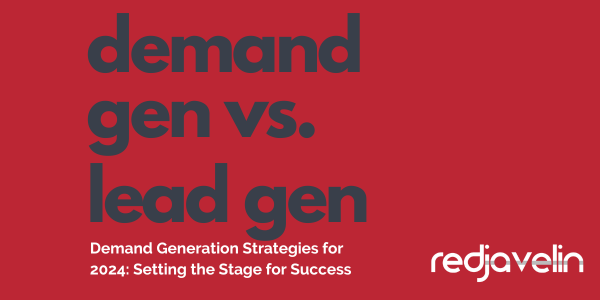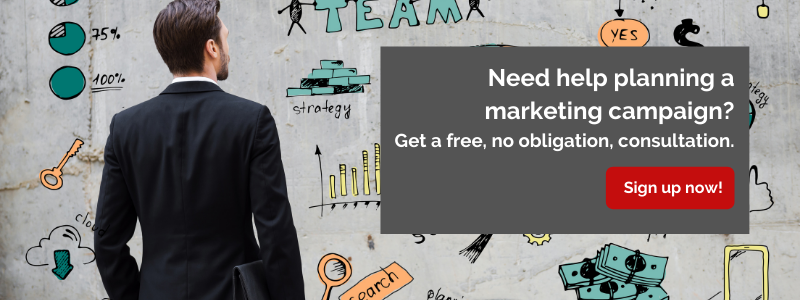
Oh, I see you were expecting me to mention a lead-generation strategy. Well, that's important too, but let's talk about the real star of the show: demand generation. Without it, your lead gen strategy won't stand a chance. So, let's take a closer look.
Understanding the 95-5 Rule
The 95-5 rule is a very important concept to socialize among your go-to-market (GTM) team. The 95-5 rule states that most prospective buyers are out-market at any given time. Only 5% of your total targeted market will enter the buying cycle at any one time, while 95% of your total available market is not "in-market," meaning they are not in the buying cycle at this time.
For example, if your target market consists of 500 companies, only 25 will be looking for a solution at a given time. You will be up against all your competitors for those 25 potential deals.
The remaining 95%, or in the example above, 475 companies, are considered out-of-market and are future prospects.
But the key point here is that it's already too late if buyers don't know you when they come in-market. To grow a brand, you need to market to people who aren't in-market now so that when they enter the market, your brand is top-of-mind and already on the shortlist.
The Difference Between Lead Gen and Demand Gen
The primary difference between demand generation and lead generation is that demand gen is focused on increasing your brand awareness targeted at the 95% that are currently not looking for a solution, while lead gen focuses on capturing prospects who are actively entering the buying cycle.
That means your lead generation programs are only meaningful to 5% of your total available market! So, if you are solely focused on lead gen, you are missing 95% of your market.
Most marketers believe B2B brands grow by immediately moving buyers down the funnel. In fact, 96% of marketers believe that if they run "in-market" lead generation campaigns, they can expect results in 2 weeks. However, this is not the case. Just because someone is consuming your content doesn't mean they are in-market. Buyers decide to go "in-market," not marketers.
Transition your Mindset from Lead Gen to Demand Gen
Many KPIs are based on lead-generation tactics, so it may be hard to change the internal mindset.
Shifting from lead generation to demand generation is a strategic move that benefits your company in many ways. While both approaches are essential for business growth, demand generation focuses on creating awareness, interest, and desire for a product or service across a broader audience, while lead generation specifically targets individuals or companies who have expressed interest in your offerings. Here are some reasons why you should consider this shift:
- Long-Term Relationship Building: Over time, demand generation focuses on building and nurturing relationships with potential customers and others in your ecosystem, such as media and analysts. By creating brand awareness and providing valuable content and experiences, you can engage with prospects before they are ready to make a purchase. This approach fosters trust and loyalty, leading to more significant sales in the long run.
- Wider Audience Reach: Demand generation strategies aim to reach a broader audience, not just those actively seeking your product or service. This can help you tap into new markets and customer segments, expanding your business's potential customer base.
- Reduced Dependence on Inbound Leads: Relying solely on inbound leads can be limiting, depending on the number of people actively searching for your offerings. Demand generation allows you to proactively create interest in your products or services, reducing your dependence on inbound leads and making your marketing efforts more predictable.
- Brand Building: Demand generation campaigns often involve content marketing, social media engagement, public relations, and other brand-building activities. These efforts can enhance your brand's reputation and authority in your industry, making it easier to attract and convert leads in the future.
- Adaptation to Changing Buyer Behavior: Buyer behavior constantly evolves, and consumers today are more informed and empowered than ever. Demand generation strategies align with these changes by providing valuable content and experiences that educate and engage potential customers throughout their journey rather than just at the point of purchase.
- Better ROI: While lead generation can yield immediate results, demand generation can provide a better return on investment (ROI) over the long term. By nurturing relationships and focusing on the entire customer journey, you can increase the lifetime value of customers and generate more revenue in the long run.
- Alignment with Modern Marketing Techniques: Demand generation is well-aligned with modern marketing techniques like inbound marketing, content marketing, and social media engagement. These approaches have become increasingly effective as buying behavior has shifted toward online research and social interactions.
- Competitive Advantage: Many businesses still primarily focus on lead generation. By shifting to demand generation, you can differentiate yourself in the market, potentially gaining a competitive advantage by creating a strong brand presence and engaging with customers throughout their journey.
- Data-Driven Insights: Demand generation often relies on data analytics to understand customer behavior and preferences. This data-driven approach allows marketers to refine their strategies continuously and make informed decisions based on real-time insights.
While lead generation is undoubtedly valuable, making the shift towards demand generation can offer a more comprehensive and sustainable marketing approach. By focusing on creating awareness, building relationships, and engaging with a wider audience, marketers can position their businesses for long-term success and effectively adapt to the ever-changing landscape of B2B consumer behavior and technology.




